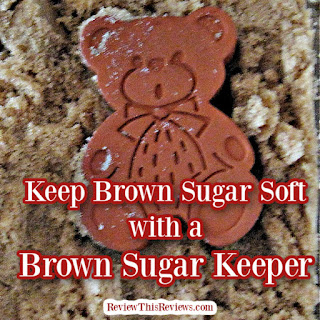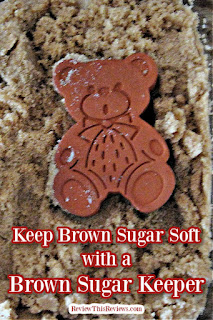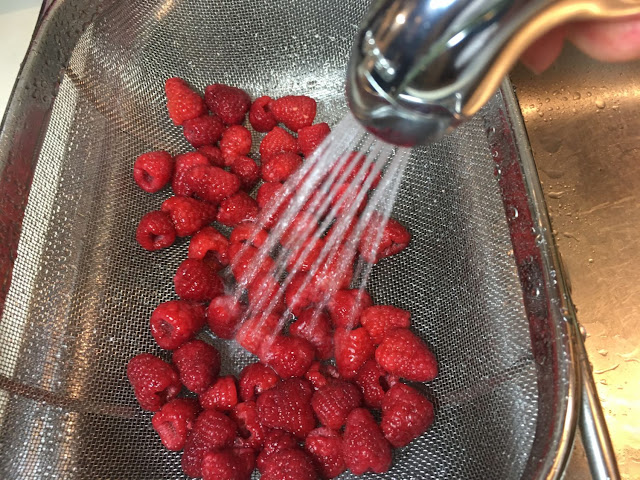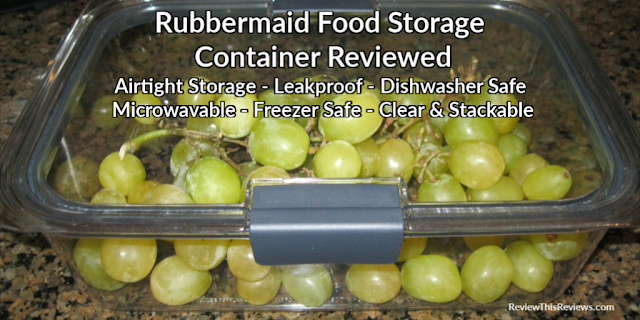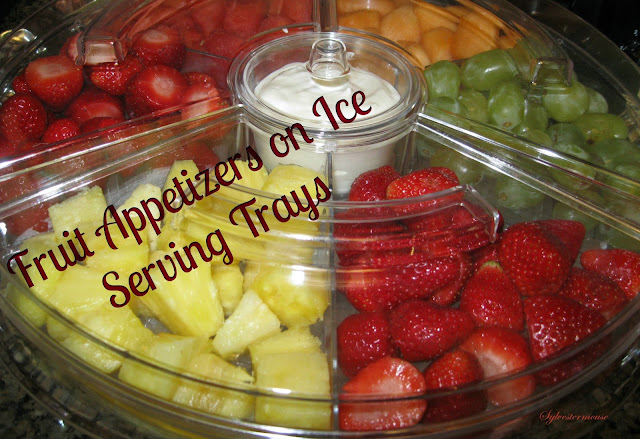Recently, I wrote about my successful experience with growing
microgreens, using Hamama Seed Quilts. I thought it would be helpful to
also review both the decorative accessories and most helpful extras I use
and love for growing these delicious and extremely nutritious microgreens
indoors, in the comfort of my living room.
Although the Hamama's bamboo grow tray frame, seed quilt label holder, and
other decorative accessories are designed specifically for the company's
innovative, patent-pending growing system, the other recommended products
I'm reviewing here would be both useful and beneficial to anyone who enjoys
gardening, cooking, or both!
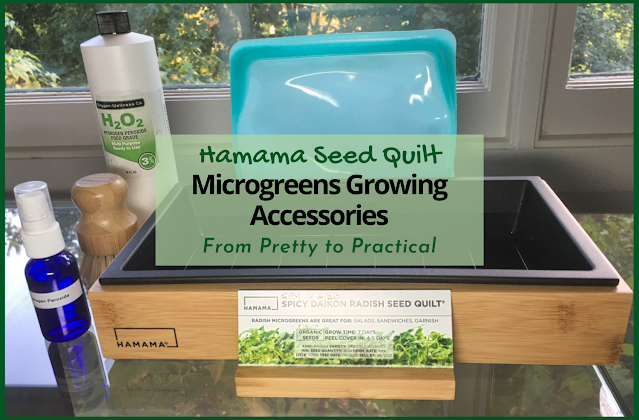
|
|
My favorite accessories and useful supplies for growing microgreens with
Hamama's seed quilt growing system
|
Microgreens are a delicious, nutritious way to add essential vitamins,
minerals and antioxidants to salads, sandwiches, and other dishes for those
of us who try to live a healthy lifestyle. Since health was my primary
motivation for
losing nearly 60 pounds on a keto diet, my new healthier lifestyle focuses quite a bit on healthy eating, and
especially on getting more nutrition from food and relying less on
supplements, something that is especially important when following a
ketogenic approach to eating.
My Favorite Hamama Microgreens Growing System Accessories and Helpful
Supplies
As I shared in my previous post, the
Hamama microgreens seed quilt growing system
is so easy, even this “brown thumb” gardening amateur is successfully
growing delicious, healthy, nutrient-dense microgreens throughout the
year, even here in New England. Now that my husband and I are no longer
are at the mercy of the unpredictable and often scant selection of
packaged microgreens at our local stores, we use our fresh, home-grown
microgreens for more than just garnishes. In fact, they make up half the
dark, leafy greens in our large, nightly dinner salads!
Along with Hamama's seed quilts and grow trays, the core of their unique
container gardening system, I've also purchased a few accessories and
supplies that have made the process of growing my own fresh, nutritious
kale, broccoli, clover, daikon radish, zesty salad mix, and other varieties
of microgreens more enjoyable and convenient.
Hamama's Custom Growing System Accessories
Bamboo Grow Tray Frames and Seed Quilt Label Holders

|
I love the way the bamboo grow tray frames and seed quilt label holders
dress up my microgreens growing setup by our living room windows
|
Since counter space in our small kitchen is at a premium, I grow my
microgreens in our living room, which has a wall of floor-to-ceiling windows
(although Hamama microgreens seed quilts don’t require a lot of light). So,
I successfully harvested a few different varieties of microgreens using this
unique growing system, I decided to spring for Hamama’s proprietary bamboo
frames and seed quilt label holders. The bamboo frames fit either style of
the company's grow tray. I started with Hamama's white ceramic tray. See how
nice the bamboo frame looks with it?

|
The white ceramic grow tray is thicker (and heavier) than the black
plastic tray.
|
Not long after, I decided to switch to the black plastic grow trays,
which weigh very little and are much easier to carry back and forth to the
kitchen (on the other end of our house) for cleaning. Although I try to
avoid buying plastic for disposable items, these trays are reusable, and I
plan to be using them for the foreseeable future. The walls are much
thinner, allowing a narrow margin around the seed quilt, so it's much
easier to check the water level in relation to the coconut coir mat (and
to add a bit more water, if it's evaporating faster than expected). The
marked fill line is also thinner than on the white ceramic tray, so it's
easier to gauge how much water to add for soaking the seed quilt.
Whether you prefer the black plastic or white ceramic grow tray, the
simple, sleek and stylish bamboo frames make them much more attractive and
blend well with any style of home décor. There is a Hamama logo in the lower
left corner of one side of the frame. Usually, I'm not a fan of displaying
brand names, especially on decorative items. But in this case, I think the
logo has been done quite tastefully and doesn't detract from the look.
However, it can easily be hidden by facing that side of the frame toward the
window, if you prefer.
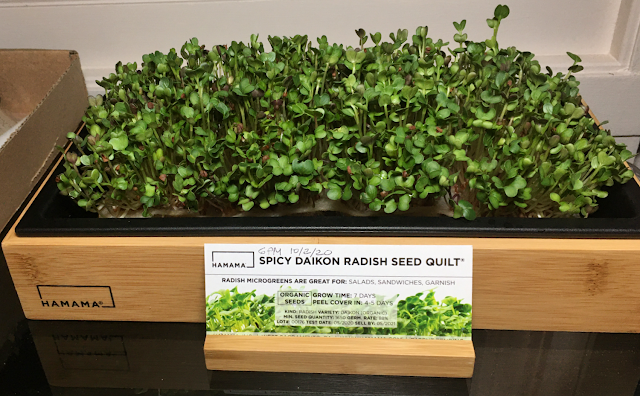
|
The Hamama bamboo grow tray frames and matching seed quilt label holders
give my microgreens growing setup a more attractive, "finished" look.
|
The matching bamboo label holders are great for displaying the coated
cardstock labels that come with each seed quilt at an easy-to-read angle.
These labels provide a useful reminder of which type of microgreens I’m
currently growing, as well as the approximate number of days until the paper
cover should be peeled, and the total number of days until harvest. Before I
got these label holders, I used to tape the cardstock labels to the grow
trays. The tape left a sticky residue and wasn’t very attractive. Now, my
bamboo seed quilt label holders coordinate perfectly with my grow tray
frames.
Each holder is a nicely finished, rectangular block of bamboo the exact
length of a Hamama seed quilt label, with a thin slot for the label.
Whenever you start a new seed quilt, simply slide the label that comes with
it into the slot, which holds it upright and angled slightly back for easy
reading. When you finish harvesting your microgreens crop, just remove and
discard the label from the holder, so it’s ready for the label from your
next seed quilt.
More Matching Bamboo Accessories
Hamama makes a matching seed quilt holder for storing your extra seed
quilts, but since I don’t store mine out where people can see them, I didn’t
need one. The company has just announced its brand new bamboo "grow shelf,"
a gorgeous self-standing, five-shelf, open shelving unit to current
customers, who can preorder one now. I expect it to be added to the Shop
section of the website soon, so everyone who wants will be able to order
one.
Extra Hamama Grow Trays
Once I knew I was going to be using this unique microgreens growing system
regularly, I ordered two additional grow trays. As of this writing, the
price of two black grow trays is only four dollars more than the price of
just one. And, since it’s essential to clean each grow tray thoroughly after
harvesting one seed quilt and before starting another, it’s nice to have an
extra tray so there’s a clean one standing by to start my next microgreens
seed quilt as soon as I harvest the previous one. I can soak, scrub, and
disinfect the used tray at my leisure (it’s also safe to clean in the top
rack of the dishwasher).
Hamama Microgreens Harvesting Kit
The company offers a convenient set of three tools for harvesting the
microgreens grown with their proprietary seed quilts and grow trays. The
kit contains:
- 1 reusable Stasher silicone bag (sandwich size)
- 1 pair of scissors (with the Hamama logo)
-
1 bamboo scrub brush with natural fiber bristles (for thoroughly scrubbing
your grow tray)
It's a very useful kit, particularly if you prefer to harvest your
microgreens by trimming them just above the top of the seed quilt, rather
than pulling them out, roots and all. Alternatively, you can purchase a
Stasher silicone food storage bag, a pair of sharp, stainless steel
scissors, and a bamboo scrub brush with natural fiber bristles (or use
equivalent items you may already own) to create your own customized
microgreens harvesting kit.
Save Money on Your First Hamama Grow Kit, Seed Quilt, or Accessories
Order!
Don't miss my Hamama shopping link and discount code at the end of this
article to save 10%!
My Favorite, Practical Products for Growing, Harvesting and Storing Fresh
Microgreens
Stasher Silicone Food Storage Bags
You don't have to grow microgreens to fall in love with these fabulous
food storage and cooking bags
In August 2019, I wrote a review of my favorite silicone kitchen tools
and accessories, including silicone food storage bag. But, after trying
the Stasher silicone bag in my Hamama Harvesting Kit, I fell in love with
it. I purchased three more in larger sizes, and I definitely plan to add
more over time. Although they cost more than other silicone bags, they're
totally worth the price!
These Stasher silicone bags are a cinch to open and close, unlike any other
brand of silicone food storage bags I've tried. Yet, they're also airtight
and watertight. Many people use them for sous-vide cooking, placing the
sealed bag of raw food in a pot of boiling water. And since these bags are
leakproof, They're also perfect for marinating meats, poultry, seafood,
fish, or vegetables to infuse them with extra flavor.

|
The Stasher silicone food storage bags I have purchased to date
|
The Stasher bag that came with the Hamama Harvesting Kit is the sandwich
size (7.5" x 7.5" x 1"), which has a 15 oz. capacity. (It's the smallest
one in the photo of my current Stasher bag collection.) However, since I
wrap my harvested microgreens loosely in a paper towel before placing them
in the bag to store in my refrigerator, I find that I need a larger size
if I want to harvest all (or most) of a seed quilt at one time.
The sizes I use to comfortably contain an entire crop of paper
towel-wrapped microgreens from a Hamama seed quilt are the tall Stasher Silicone Reusable 1/2 Gallon Food Storage Bag
(10.25” x 8.25” x 1.5” with a 64.2 oz. capacity), and the Stasher Silicone Reusable Stand-Up Food Storage Bag
(7.75" x 7" x 3" with a 56 oz. capacity) that, true to its name, stands up
on its own for easy filling and removal of the contents.
Dedicated Scissors
If you prefer to harvest your microgreens with scissors, it's a bad idea to
use your general-use utility scissors that are also used to cut paper,
crafting materials, etc. I highly recommend dedicating a pair of scissors
exclusively to harvesting microgreens and herbs, and cleaning the blades
scrupulously before each use. They don't need to be fancy kitchen shears,
but they should be sharp and comfortable and have stainless steel blades.
(Who wants specks of rust in their microgreens or herbs?)
If I were putting together my own harvesting kit, it would include the
Fiskars 01-004761J Softgrip Scissors with 8-inch stainless steel
blades (or something similar), which are backed by a lifetime
warranty.
Bamboo and Natural Fiber Bristle Scrub Brush
It's important to
clean Hamama grow trays
very thoroughly before starting each seed quilt. Although the trays are
top-rack dishwasher safe, the top rack or our modestly sized dishwasher is
usually filled to capacity with glasses, cups, bowls, long-handled spatulas,
cooking tongs, etc. So, I prefer to scrub my grow trays by hand.
It can be challenging to clean between the ridges inside the black grow
trays, particularly at the corners and around the perimeter. That's why the
Hamama Harvesting Kit includes the small, round, bamboo handled scrub brush
with natural fiber bristles, which I find invaluable for this purpose.
When I looked for a similar brush, most of them had either synthetic
bristles or components made of plastic or other non-biodegradable
components. After considerable searching, I finally found a palm-sized,
mildew-resistant
round bamboo scrub brush with organic, natural fiber bristles, very similar to the one in the Hamama Harvesting Kit. As a bonus, it
comes with soap dish that can also be used to store the scrub brush out on
the counter, if desired (just make sure both the brush and the dish are
completely dry first).
This versatile brush has medium-hard bristles that can also be used to
clean even non-stick pots and pans, dishes, vegetables, and more.
3% Food Grade Hydrogen Peroxide and Fine Mist Spray Bottle
Only one of my Hamama seed quilts has ever developed mold, back when I was
still a seed quilt "newbie." It was hot and humid in our living room, since
we don't have central air conditioning and only turn on each room's A/C unit
when we are actively using the room. I made the common rookie mistake of
over-watering that one seed quilt, so that the paper covering was wet. When,
unsurprisingly, about a third of the sections failed to germinate. I then
compounded the problem by covering those water-logged sections with strips
of newspaper for two days, after reading a troubleshooting tip for a
different problem. (I did say I had a brown thumb!) Of course, when I pulled
off the newspaper strips at the end of two days, there were signs of mold,
and unfortunately, the seed quilt was unsalvageable at that point.
Before throwing away the moldy seed quilt, I took a couple of photos and
shared them in the Hamama Friends group on Facebook and asked how I could
prevent a recurrence. The answers were very instructive. One of the best
recommendations I got was from a woman who recommended that spraying the
surface of the water in the grow tray with food-grade 3% hydrogen peroxide
before soaking future seed quilts. She also said she mists the leaves with
it after peeling off the paper cover, and hasn't had any mold issues since
she started doing that.
I immediately ordered a bottle of
food grade 3% hydrogen peroxide. A while ago, I had purchased a dozen small,
cobalt blue glass mister bottles. I filled one of them with the 3% hydrogen peroxide and labeled it (since
the rest of my cobalt glass misters are also filled with clear liquids), and
it now lives next to my Hamama grow trays to remind me to spritz the water
before soaking each new seed quilt. And, like the helpful person who
suggested I use the 3% hydrogen peroxide for this purpose, I haven't seen a
speck of mold since I started following her excellent advice!
I find these pretty and practical cobalt blue glass spritzer bottles useful
for many different purposes. They spray a very fine mist, which makes them
ideal for evenly and lightly moistening metal clay with distilled water,
since this material dries out very quickly when exposed to air while working
with it. I keep another filled with isopropyl alcohol for sanitizing makeup
brushes, tweezers, manicure implements, etc. in between full soap-and-water
cleanings. I also find that they don't leak, so I'm considering keeping
another bottle filled with a CDC-approved alcohol-based disinfectant in my
purse for when I leave the house. The cobalt glass isn't just pretty; it
also helps protect the contents against UV rays.
Save 10% on Your First Hamama Order!
If you haven't ordered directly from the Hamama website before, you can
use my Hamama shopping link
(or click on the image below), add the products you want to the shopping
cart, then use the discount code SUPERGREENS
during checkout to get 10% off your product total. And if you're lucky
enough to have receive a Hamama grow kit as a gift, you can use this link
and discount code to save 10% on the beautiful bamboo accessories made
exclusively for the Hamama seed quilt and grow tray system.
My Favorite Hamama Microgreens Seed Quilt Accessories by Margaret Schindel
Posts About My Keto Diet Journey
My First Year on The Keto Diet
Preparing to Succeed on the Keto Diet, Part One
Preparing to Succeed on the Keto Diet, Part Two
Low Carb Muffins & Cupcakes: Treats to Enjoy on a Keto Diet
Low Carb Keto Chocolate Yogurt Granola Chip Pudding Recipe
Good Dee’s Keto Cookie Low Carb Baking Mix Review
Hamama Microgreens Growing Kit Review & Success Tips
My Favorite Hamama Microgreens Seed Quilt Accessories
Keto Cheddar Cheese Biscuits With Chives Recipe
The Ultimate Keto Hot Chocolate Recipe
The Best Low Carb Keto Gift Ideas: Keto Gift Guide
The Best Low Carb Keto Cinnamon Muffins
Wholesome Yum Keto Bread Mix and Yeast Bread Recipe
The Good Chocolate 100% Organic No Sugar Dark Chocolate Review
The Best Advice to Maintain Your Keto Diet Weight Loss
My New Irresistibly Delicious Keto Cheese Crackers Recipe
Luscious Low Carb Keto Triple Peppermint Cheesecake Brownies Recipe
Quick & Easy Livlo Blueberry Scones Keto Baking Mix Review
Snack Better With The Best Healthy Keto Cookie Dough Bites
The Best Quick and Easy Low Carb Keto Pizza Recipe
The Best Quick and Easy Low Carb Keto Shortcake Cupcakes Recipe
Comparing the Best Keto-Friendly Chocolate Hazelnut Spreads - No Added
Sugars
The Best Low Carb Keto Sandwich and Burger Buns Mix
Blueberry Biscuit Scones — New, Easy, Low Carb Keto Recipe
The Best Keto Pizza Crust Mix With 0 Net Carbs
An Unusual, Delicious Strawberry Chocolate Tea With 0 Calories
Delicious Sugar-Free Keto Cookies That OREO Fans Will Love
Healthy Pistachio Cherry Chocolate Chip Marshmallow Cereal Treats
Recipe
Easy, Decadent, High Protein, Sugar-Free Rocky Road Cottage Cheese Ice
Cream
The Best Quick & Easy Low Carb Sausage and Ricotta Calzones
How to Make Refreshing Vanilla Italian Soda (With or Without Cream)
Reviews of the Keto Diet by Barbara C. (aka Brite-Ideas)
My Personal Keto Testimonial
How I Stayed Committed to the Ketogenic Way of Eating
Read More Reviews About Gifts by Our Review This Reviews Contributors
Read More Product Reviews by Our Review This Reviews Contributors
Note: The author may receive a commission from purchases made using links found in this article. “As an Amazon Associate, Ebay (EPN), Esty (Awin), and/or Zazzle Affiliate, I (we) earn from qualifying purchases.”


